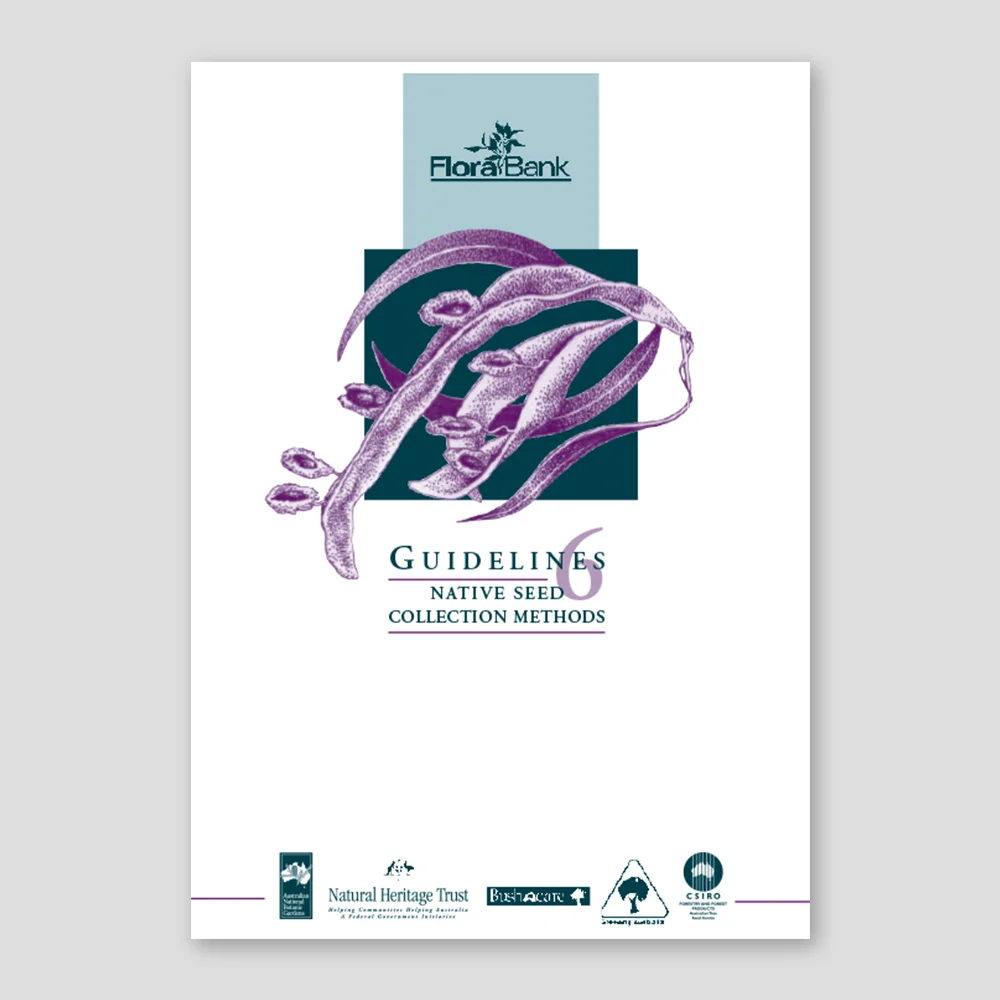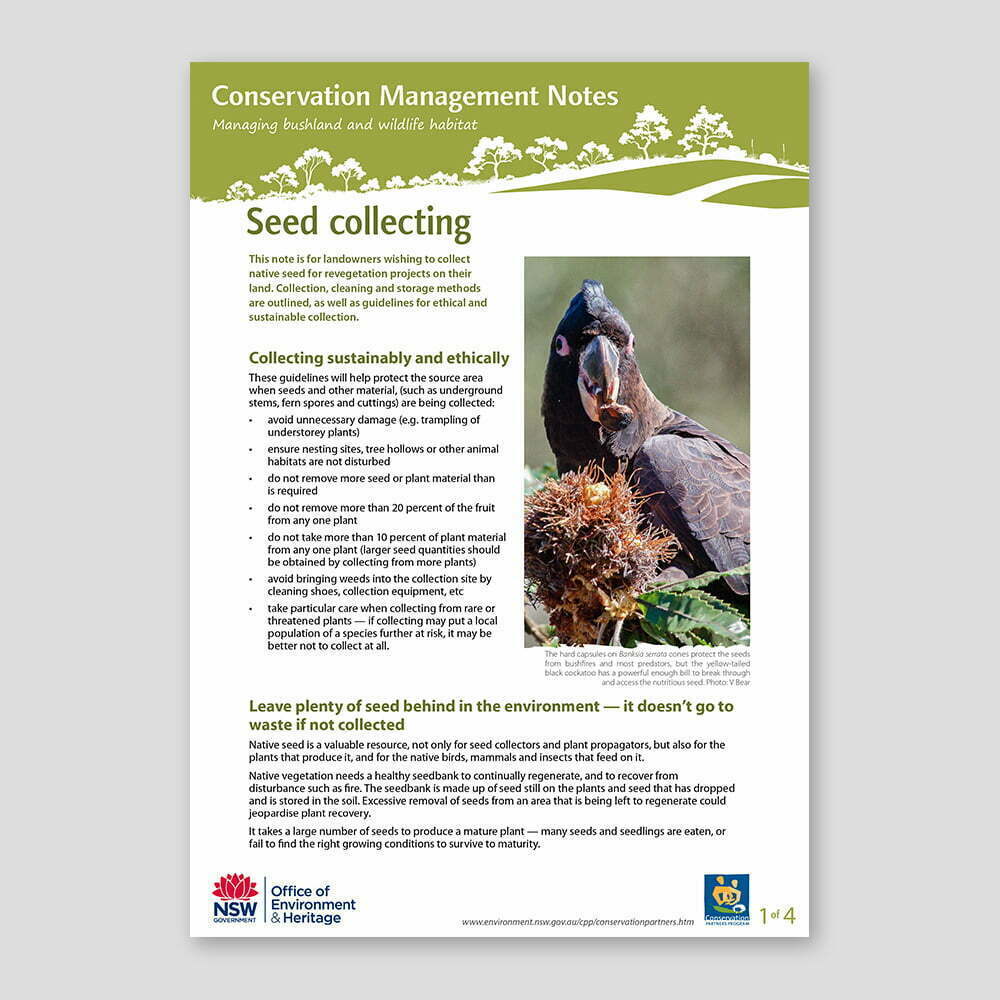Handy ‘how-to’ guide:
Collecting and caring for seed from Australian native plants
The reintroduction of species into the landscape relies on seed collection for plant propagation and direct seeding. Our partners at Greening Australia have worked with us to put together this handy guide based on their Florabank Program, covering things you need to think about when collecting, propagating and storing native seed.
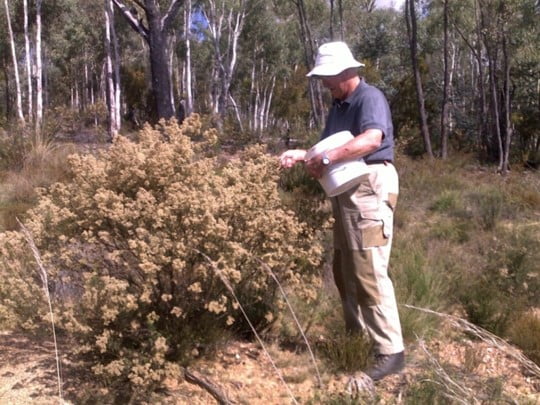
Prepared by Stephen Bruce, Lucy Wenger and Ben Hanrahan

1. Before you start collecting seed, you need to think about where will the seed come from?
To collect native seed, you need to have:
- The permission of the landholder to enter the property and to collect seed (e.g. local government, main roads, private land).
- A permit from the relevant authorities – e.g. State or Commonwealth Department depending on the land tenure and the species.
- To collect from Threatened species and Ecological Communities you will need a special permit. The table bellows provides information about the permits required depending on the land you are intending to collect from.
| Land Use | National Parks and Wildlife Service Permit Needed | Permission required |
| National Parks and Nature Reserves | Yes, will require a S132 Licence (Scientific Licence). Contact National Parks and Wildlife Service. Ph: 02 9585 6540 | Yes, but permission only given if particular species cannot be sourced elsewhere. |
| Commonwealth Land | Only if the vegetation community or plant is threatened or endangered Need an Environmental Protection and Biodiversity Conservation Act 1999 Part 13 permit for this activity. | Yes, permission of land manger. Notification given of when and where collecting. |
| State Forest | Yes, will require a S132 Licence (Scientific Licence) if the vegetation community or plant is threatened or endangered under New South Wales legislation. | Yes, from State Forests or Department of Primary Industry. Notification given of when and where collecting. Royalty payment. |
| Traveling Stock Reserves (Crown Land) | Yes, will require a S132 Licence (Scientific Licence) if the vegetation community or plant is threatened or endangered under New South Wales legislation. | Yes, contact your local Local Land Services. Fee may be required. |
| Private land e.g. farms | Yes, will require a S132 Licence (Scientific Licence) if the vegetation community or plant is threatened or endangered under New South Wales legislation. | Landholder permission. Fee may be required but often request a small amount of seed or plants in return. |
| Council Roadsides | Yes, will require a S132 Licence (Scientific Licence) if the vegetation community or plant is threatened or endangered under New South Wales legislation. | Yes, written or verbal permission. Council may require notification of when and where. Strict Work Health and Safety working by roadsides. |
| State Highways e.g.. Road Traffic Authority, Vic Roads | Yes, will require a S132 Licence (Scientific Licence) if the vegetation community or plant is threatened or endangered under New South Wales legislation. | Yes, written or verbal permission. Authorities may require notification of when and where and require safety signage and other Work Health and Safety specifications. |
| Crown Land e.g. Cemeteries | Yes, will require a S132 Licence (Scientific Licence) if the vegetation community or plant is threatened or endangered under New South Wales legislation or if site is a covenant managed by National Parks and Wildlife Service. | Yes, local council or National Parks and Wildlife service. |
| Voluntary Conservation Agreement on private land (Covenant) | Yes, will require a S132 Licence (Scientific Licence) if the vegetation community or plant is threatened or endangered under New South Wales legislation. | From landholder, only to be used for private use not commercial. Collect seed in the conservation area only if seed of the particular species is not available elsewhere, or is to be planted in the covenant or adjacent site. |
| * A permit is always needed if collecting endangered plant or vegetation community (e.g. Box-Gum Grassy Woodland) on any land use. As a general rule, National Parks and Wildlife Service exclude collection of individually listed threatened species. Collection of threatened species would only be permitted to a specific request and with specific conditions attached regarding use and end point of the material. | ||
2. Identify your plant and know which species you are collecting.
There are four main native plant species fruit/flowers from which the seed is obtained:
Woody capsules
Example: Eucalypts, Callistemon, Leptospermum, Melaleuca.
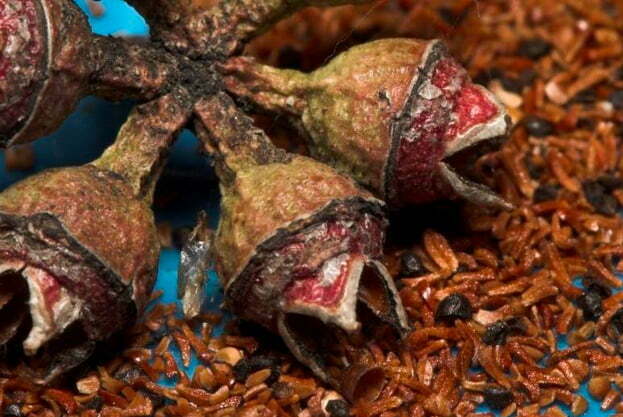
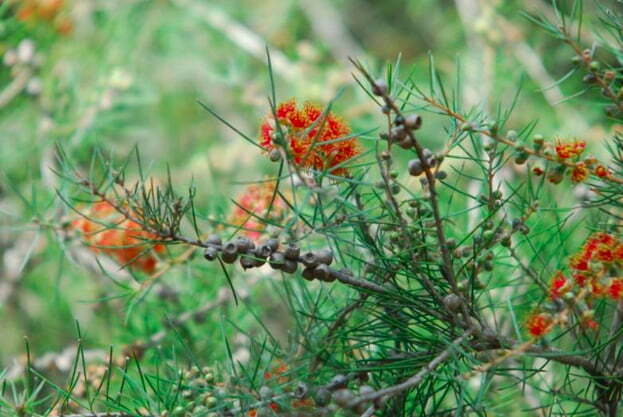
Seed pods
Example: Wattle, Hardenbergia, Indigofera, Bush Peas.
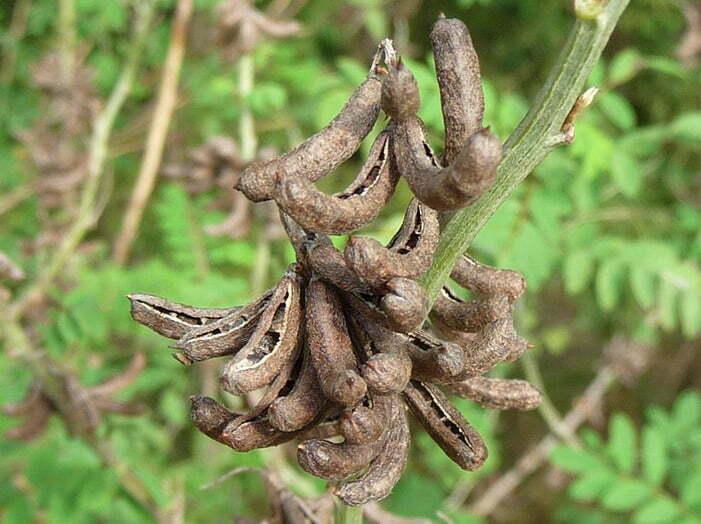
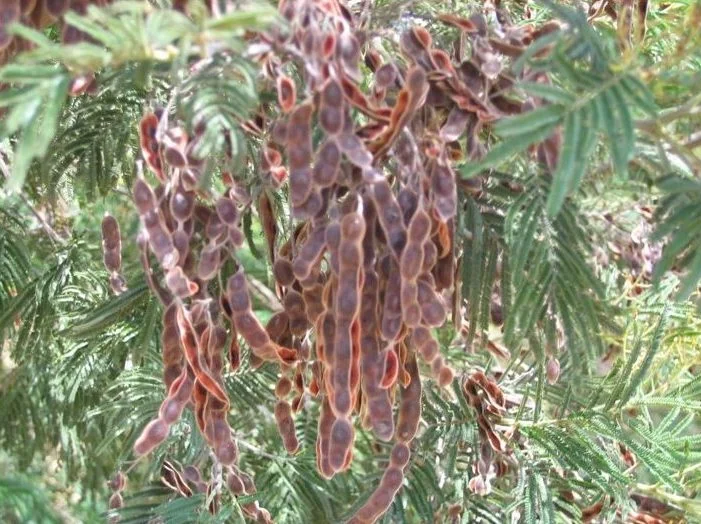
Cones
Example: Callitris, Casuarina.
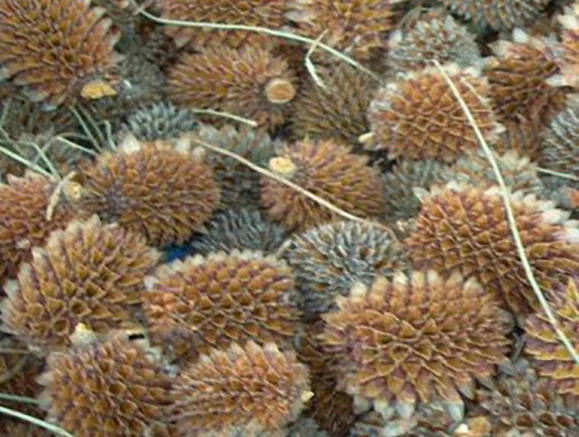
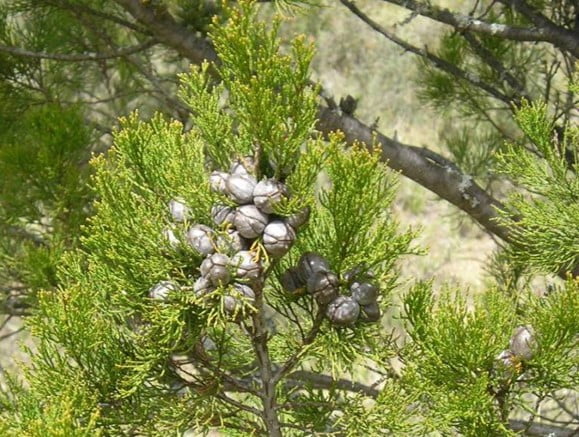
Grains
Example: Austrostipa, Austrodanthonia, Themeda, Poa.
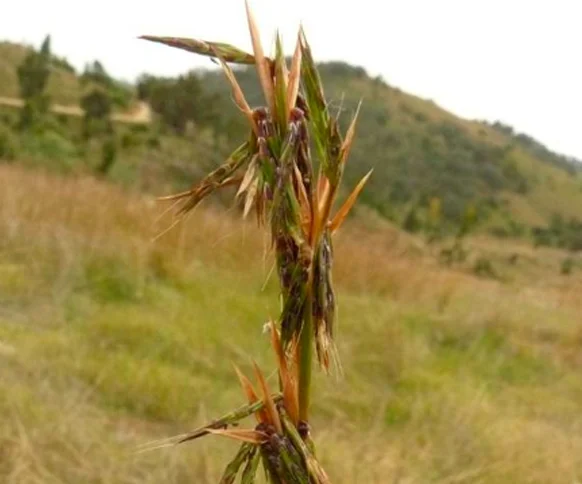
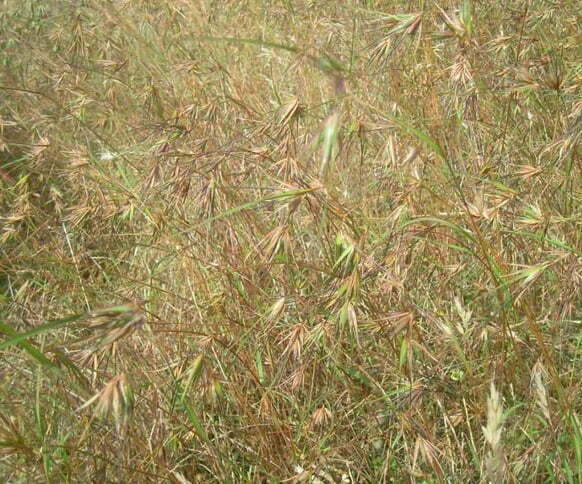
3. Work out when to collect the seed.
Each species has its own timetable of flowering, seed development and seeding:
- Pea family (Fabaceae) and many other hard seeded species are ready from November – January.
- Grasses: December – March depending on species and season.
- Myrtaceae family or hard woody fruits such as Eucalypts & Hakea spp. are ready throughout the year.
It is also really important to collect seed when it is ripe. Mature seed retains viability longer than immature seed and this means it will germinate and grow successfully.
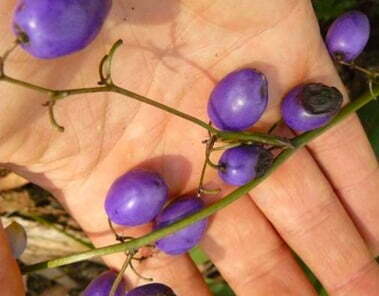
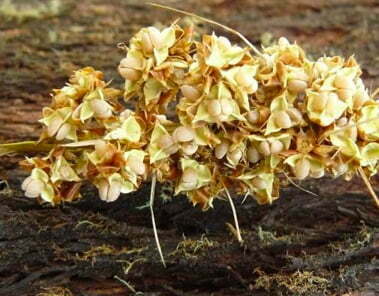
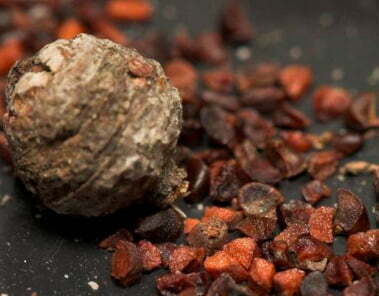
4. Use ethical collection practices and consider seed genetics.
- Don’t collect more than 10% of the seed from any one plant. If plants have only a few seeds each, don’t collect from more than 1% of the population.
- If possible return plant material such as twigs and discarded capsules to the collection site.
- Find out the provenance of the seed source. Provenance is the origin of a seed source and refers to the genetic adaptation to local environmental conditions. If you collect seed from plants at a high altitude, wet site and plant them at a lower altitude, dry site they may not survive the warmer, drier conditions (e.g. Snow Gum).
Example 1: Acacia acinacea (Gold Dust Wattle) from Vic into NSW has provenance variation, as is shown in the photo:
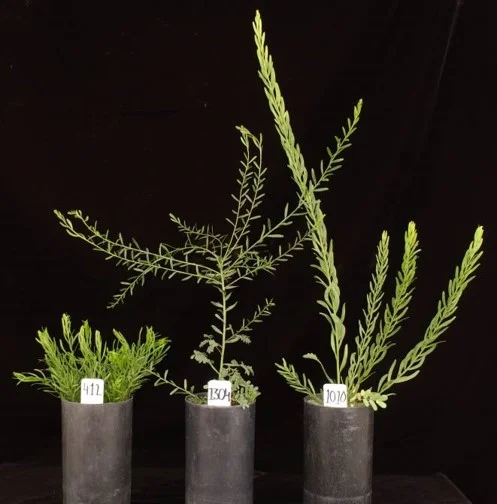
Example 2: Dodonaea viscosa which is one species but has seven sub-species. This means it is very important to know the provenance of the seed as it has adapted to different climate and environmental conditions. The altitude, climate and soil type have a big influence on a plant’s survival.
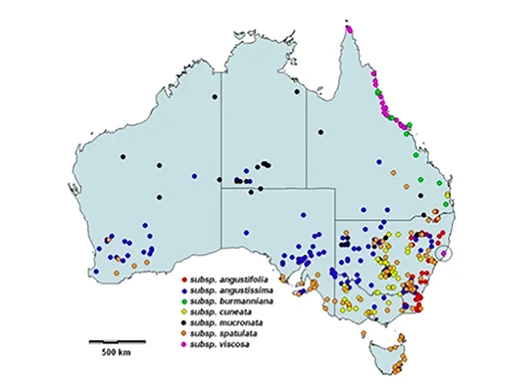
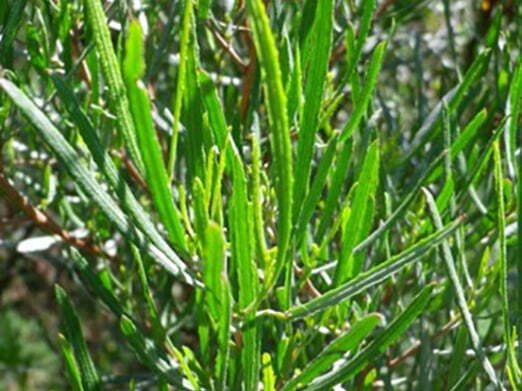
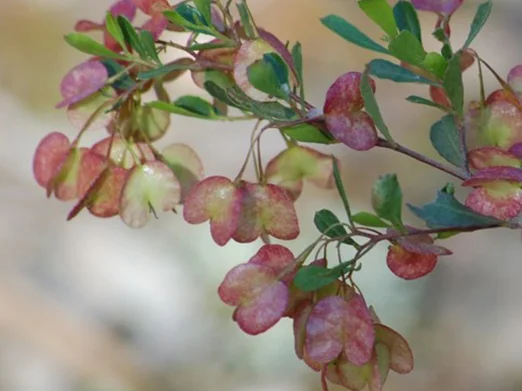
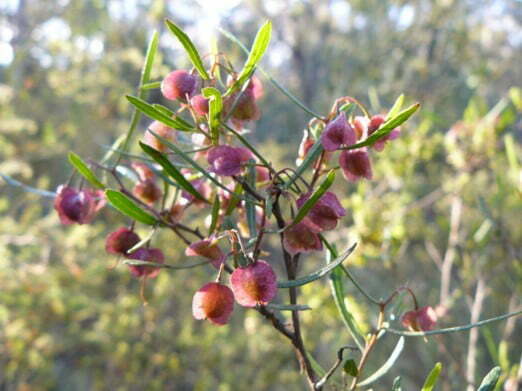
5. Obtain the best genetic quality seed.
When collecting seed, you can get good genetic quality seed if you:
- Choose from large, healthy natural populations (of at least 200 plants).
- Collect from widely spaced, healthy parents (at least 10 – 20 plants, preferably more).
- Avoid neighbouring plants (they are related).
- Avoid isolated plants (they can’t cross-pollinate so are likely to have inbred, unhealthy seed) – see areas marked 🚫 on the map.
- Get the taxonomy right.
- Choose a site with similar climate, altitude, soils.
- Choose a site where there is a healthy, large population (most important).
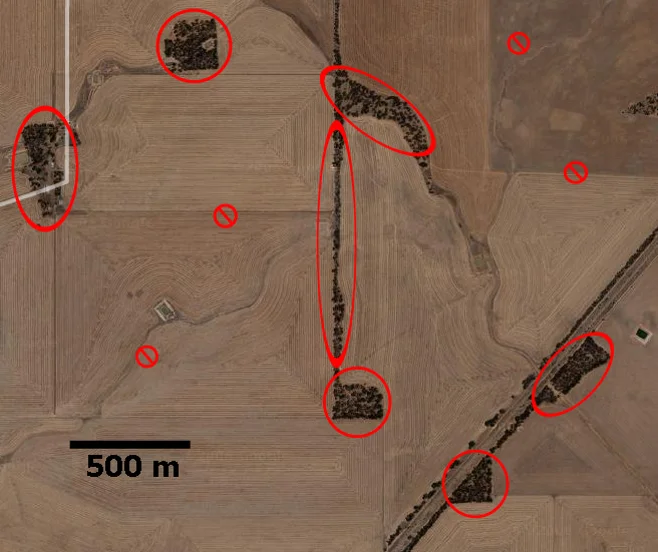
6. Use the right equipment and collection method.
The equipment you need for seed collection will depend on the species you are collecting and whether they are trees, shrubs, forbs or grasses.
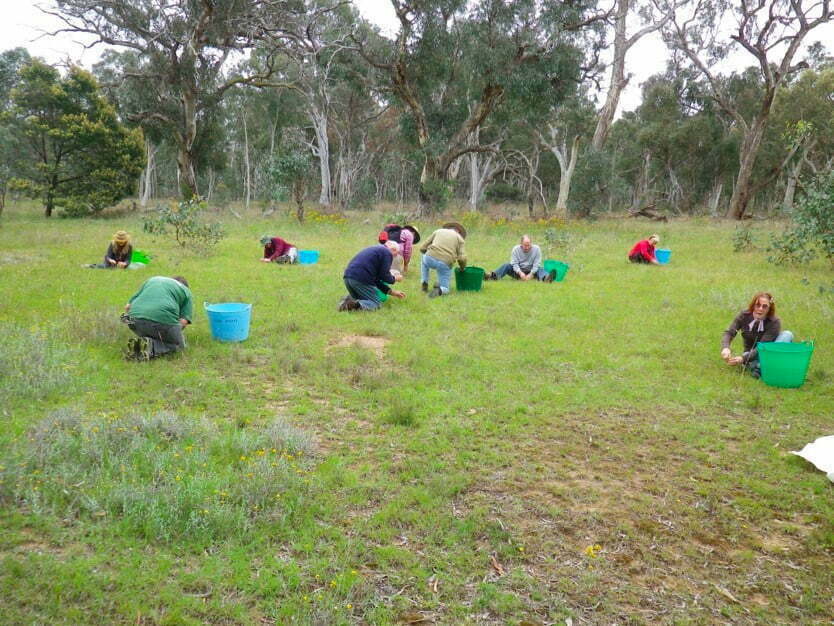
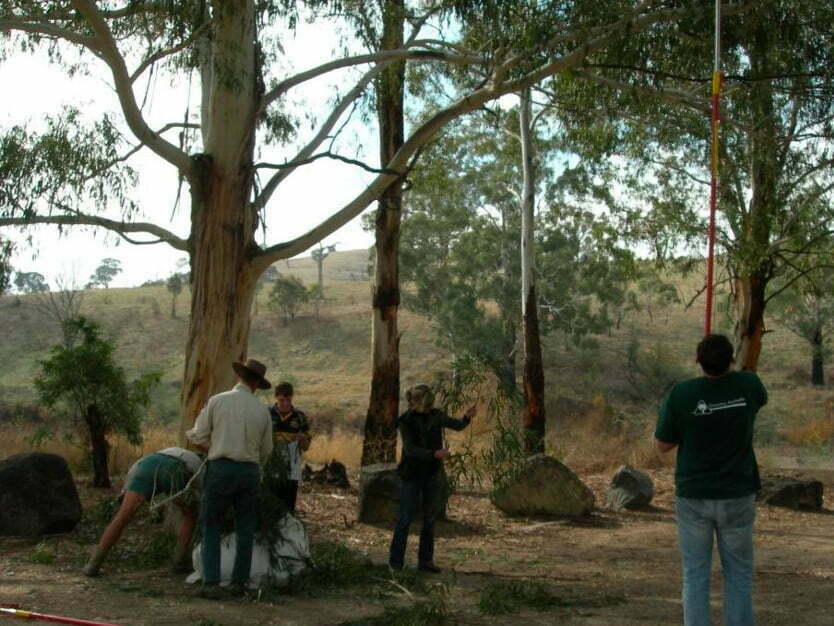
Grass seed can be collected by hand or using specialised machinery.
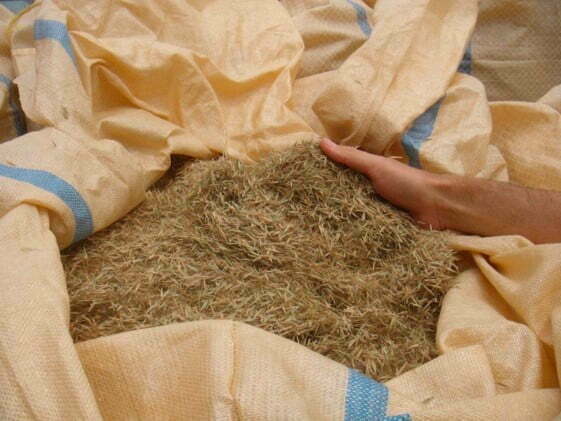
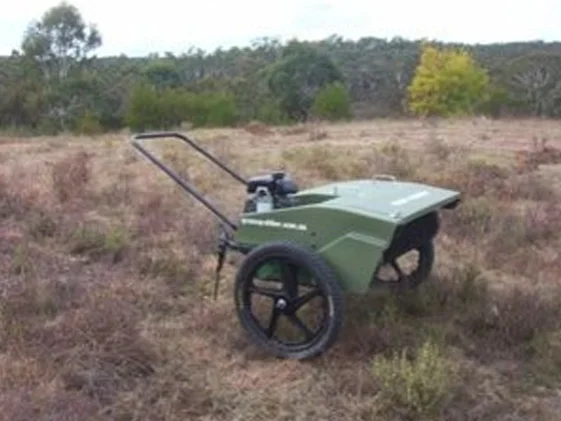
7. Consider work health and safety.
Care for yourself:
- Look out for snakes.
- Be mindful of tripping and falling.
- Be aware of traffic while collecting on roadsides.
- Carry a small First Aid kit in your backpack.
Care for the environment:
Some aspects of seed collecting could harm the collection site:
- Plant species could be damaged by trampling.
- Vehicles could damage the site.
- Vehicles and plant material from other places could bring in weeds.
- Be aware of local fauna.
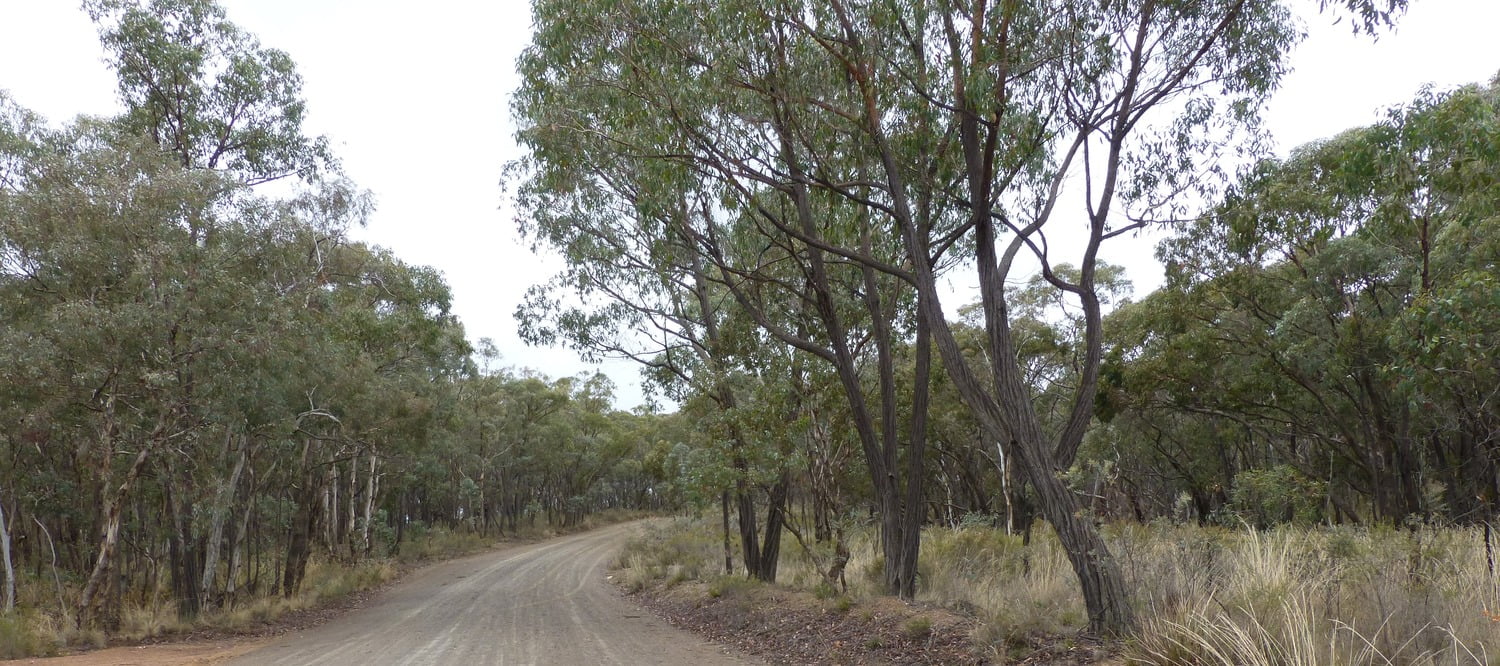
8. Keep records
Unidentified seed that has no records with it can’t be used and should be discarded. At a minimum record the date, location and species you are collecting. We recommend having a field recording data-sheets ready before you start collecting. You can use the Greening Australia Seed Collection Field Data Sheet for each batch of seed.
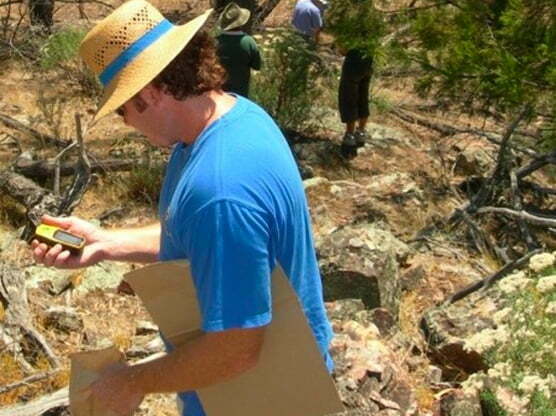
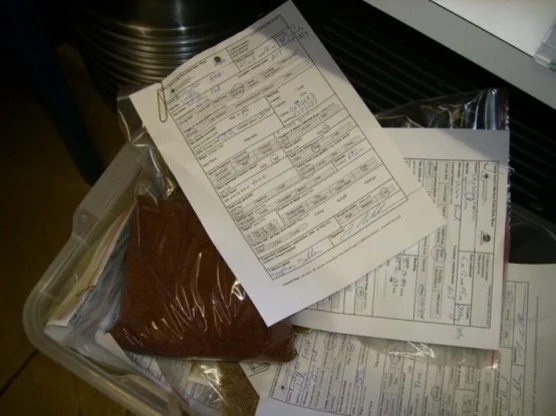
9. Drying, extracting and storing your seed.
Drying the seed is the most important step, as damp seed will go mouldy and fail to germinate. Once you extract the seed and inspect for pests, treat as necessary.
Allergies from the dust that is produced when seeds are extracted is a common problem, so make sure you wear good quality dust masks or respirators and work in an open area with good ventilation. Store the seed in airtight containers at constant temperature.
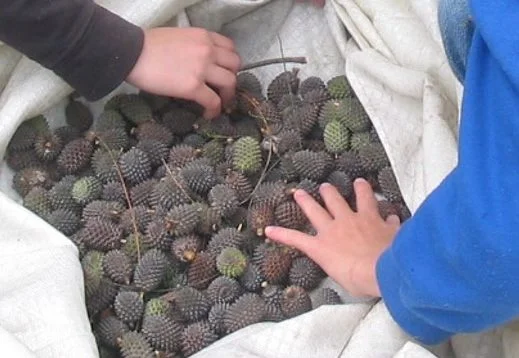
Make an environmental difference collecting seed – and be rewarded!
We need people to collect seed as it assists us with our revegetation works and it can also make sound commercial sense. Native seed can be valued anywhere between $100 – 400 and Greening Australia is interested in anyone with large stands of certain species of eucalypts or grasses.
For further information, please contact Greening Australia: (02) 6129 5400
If you are working on a restoration project through a program like Rivers of Carbon, talk to Ben, Lucy, Lori or Antia about including native species in your vegetation mix with potentially viable and harvestable seed.
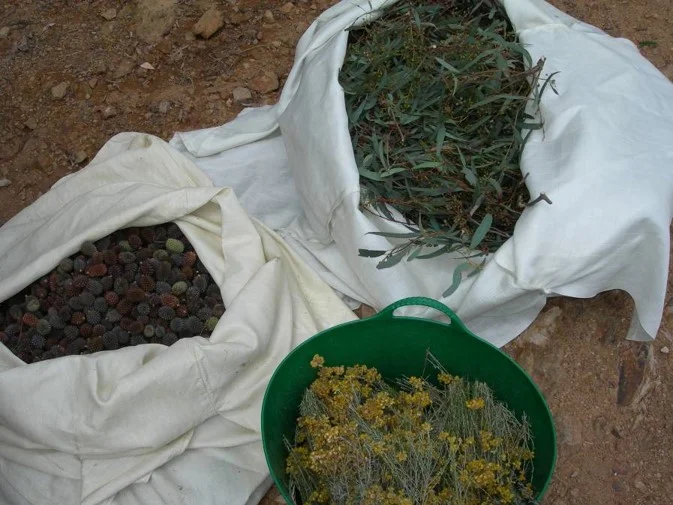
The content for this guide comes from Greening Australia’s Florabank guidelines:
This publicaton by the Office of Environment and Heritage is also good for a general overview:
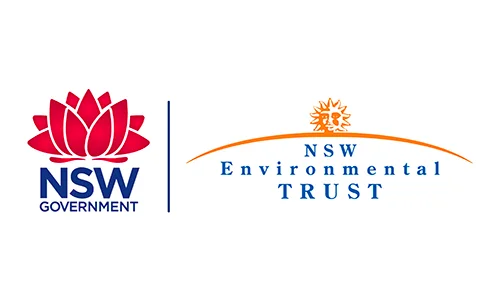
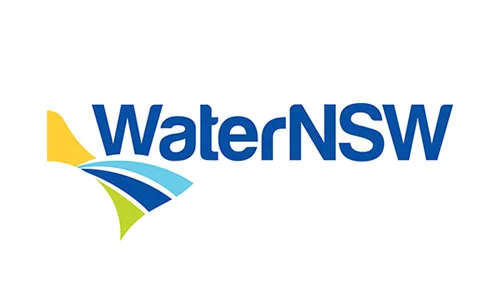
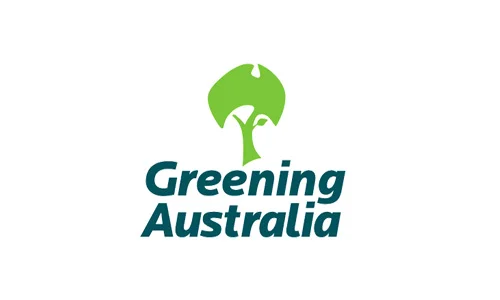
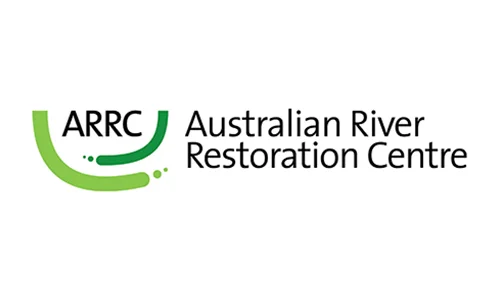
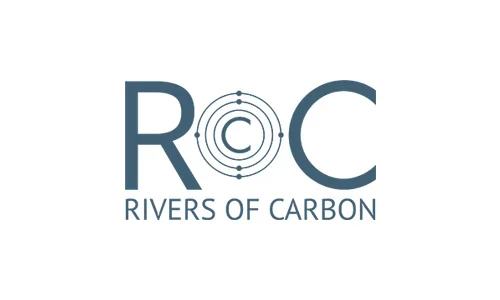
All images directly supplied by or reproduced by Rivers of Carbon and Greening Australia, with permissions from the copyright owner(s), unless stated otherwise.
